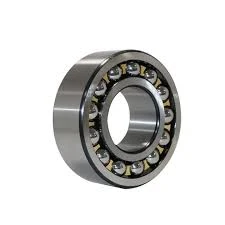
Dec . 19, 2024 12:14 Back to list
Understanding the Functionality and Applications of 51202 Thrust Bearings in Machinery
Understanding 51202 Thrust Bearing A Comprehensive Overview
Thrust bearings play a critical role in various mechanical systems, providing the essential support and stability needed to operate efficiently. Among the multitude of thrust bearing types available, the 51202 thrust bearing is particularly noteworthy due to its design and functionality. This article aims to delve into the specifics of the 51202 thrust bearing, exploring its features, applications, and maintenance practices.
What is a 51202 Thrust Bearing?
The 51202 thrust bearing belongs to the family of thrust ball bearings, which are specifically designed to handle axial loads. It is composed of two grooved races and a set of steel balls that provide smooth motion and effective load distribution. The designation 51202 refers to specific dimensional standards outlined in bearing classifications. Often used in machinery that operates at moderate speeds and requires stability in axial load applications, this type of bearing ensures that the rotating elements are aligned properly and experience minimal friction.
Features and Specifications
The primary features of the 51202 thrust bearing include
1. Load Capacity The 51202 bearing can support significant axial loads, making it suitable for high-load applications. Its design allows it to withstand thrust in one direction, making it ideal for specific machinery configurations.
2. Material Composition Typically constructed from high-quality steel, the bearing is engineered for durability and resistance to wear. Some versions may also incorporate ceramic or other advanced materials for enhanced performance under extreme conditions.
3. Size The standard size of the 51202 thrust bearing generally measures 15 mm in inner diameter, 32 mm in outer diameter, and 12 mm in width. These dimensions make it versatile for various industrial applications.
4. Operating Temperature It can perform effectively within a moderate temperature range, which contributes to its reliability in different environments.
5. Design The races are meticulously designed to minimize friction and facilitate smooth movement of the ball elements, thereby enhancing the overall efficiency of the system.
Applications
The 51202 thrust bearing is widely utilized in several applications, including
51202 thrust bearing

- Industrial Machinery Commonly found in gearboxes, pumps, and compressors where axial load capacity is critical.
- Automotive Applications Frequently employed in vehicle transmissions, where the proper alignment and load support are crucial for performance and longevity.
- Robotics and Automation Used in robotic arms and automated systems, the precise motion and stability of the 51202 bearing are vital for operational accuracy.
- Agricultural Equipment Incorporated into tractors and other machinery, providing the necessary support for various agricultural applications.
Maintenance Practices
To ensure the longevity and optimal performance of the 51202 thrust bearing, regular maintenance is essential. Key practices include
1. Lubrication Proper lubrication reduces friction and wear. It's essential to select the appropriate lubricant based on the specific operating conditions.
2. Inspection Regularly checking for signs of wear, corrosion, or damage can help identify issues before they become critical.
3. Alignment Ensuring that the thrust bearing is appropriately aligned can prevent undue stress and extend its lifespan.
4. Protective Measures Implementing dust covers or seals can help keep contaminants away from the bearing, which is crucial for maintaining operational integrity.
Conclusion
The 51202 thrust bearing is a vital component in many mechanical systems, offering reliable performance under axial loads. Its robust design, coupled with proper maintenance, can lead to significant improvements in the efficiency and life of machinery. Understanding its features and applications helps engineers and technicians make informed decisions when selecting the right bearing for their specific needs. As technology continues to evolve, so too will the innovations in bearing design, enhancing our capabilities in mechanization and automation across various industries.
Latest news
-
Premium Deep Groove Ball Bearings | High Speed & Reliability
NewsAug.29,2025
-
Durable Scaffolding Clamps - Secure & Reliable Tube Connectors
NewsAug.28,2025
-
Common Failures in Thrust Ball Bearings and Solutions
NewsAug.22,2025
-
How Tapered Roller Bearings Can Take Shock Loads
NewsAug.22,2025
-
Angular Bearings in High-Precision Spindles
NewsAug.22,2025
-
The Impact of Misalignment on Cylindrical Roller Bearing Performance
NewsAug.22,2025
